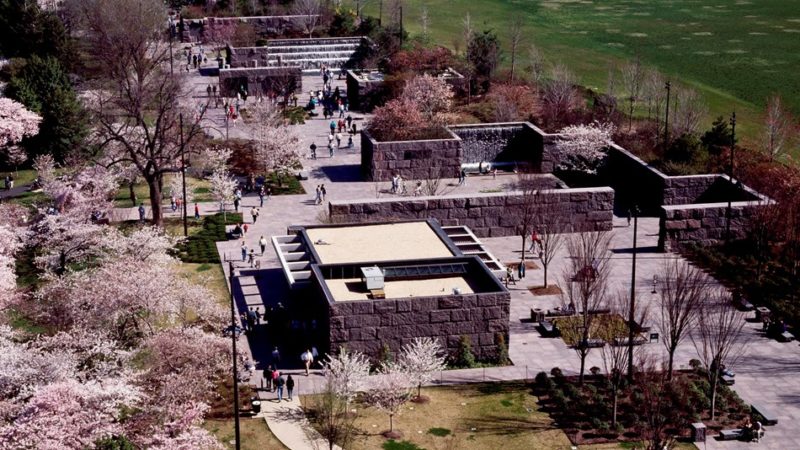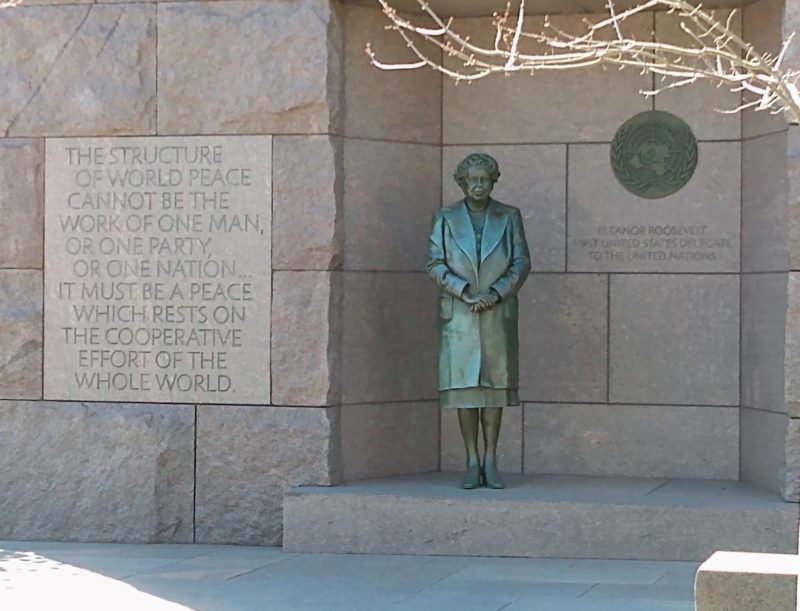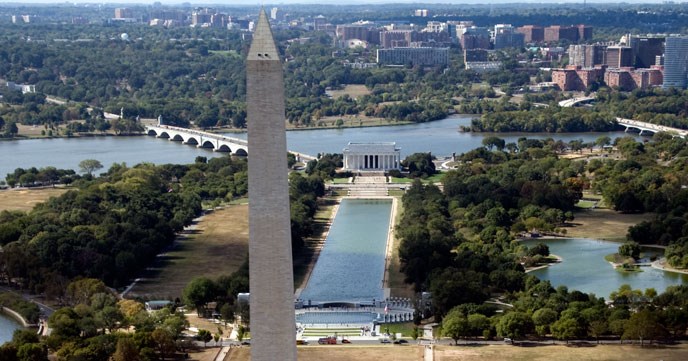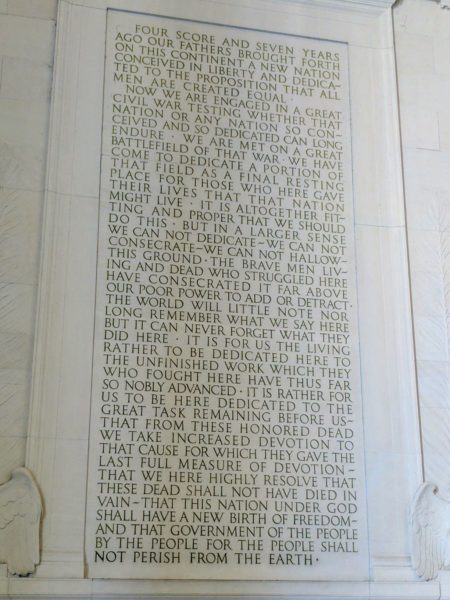
There are 129 national monuments and it may come as a surprise that many of them are not in Washington, DC. Some are places or landscapes, in other parts of the country, rather than constructed monuments. Wouldn’t that be the ultimate treasure hunt to find all 129 national monuments?
Most likely, anyone who has visited Washington, DC and walked the National Mall, has picked a favorite or two among the national monuments. Here is our list, in no particular order of favoritism, of a few of our go-to national monuments when we play tour guides. Each monument is beautiful in its own right, and each one is synonymous with a visit to Washington, DC.

Washington Monument
The Washington Monument is probably the most recognizable, along with the Lincoln Memorial. When we’re out and about, we try to find different perspectives, such as this shot we captured from the far side of the tidal basin.

Beating Out the Eiffel Tower
George Washington died (1799) long before the start of construction (1848). The monument endured its share of historical drama when construction was actually halted for nearly two decades. The year 1884 saw the completion of construction and the monument was dedicated the following year. It stands at 555′ tall and at the time, it was the world’s tallest structure beating out the Eiffel Tower.



The interior stairs are closed to the public (who would want to climb 896 stairs?) but there is an elevator. There are a lot of little known facts about the monument which you can read here. Do you know why the bottom portion of the monument is different in color than the upper portion?
To plan your visit, read here.
World War II Memorial
There have been many a day when we’ve seen elderly veterans spending time, in reflection, at the memorial. It won’t be too much longer before veterans who served in WWII will no longer be with us. The stories they can tell if someone takes the time to listen.
One of the things I find most impressive at the monument is the water features. What is it about fountains that draw us in and somehow soothe us?

Pacific & Atlantic
At first glance you might see the memorial and the fountains and think, oh, that’s pretty and move on. Don’t leave too quickly. Take the time to read the inscriptions on the wall, because they’re actually nicely detailed. There are 56 pillars that represent each state and territory, along with gold stars that represent those who gave their lives in service, as well as the Pacific and Atlantic arches.

Completed and dedicated in 2004 the World War II Memorial offers visitors a place of peaceful beauty. It should not be missed. You can find the WWII Memorial just about half way between the Washington Monument and the Lincoln Monument.



To plan your visit, read here.
Vietnam Veterans Memorial
Dedicated in 1982, the Vietnam Veterans Memorial is by far the most powerfully moving memorial on the national mall. The wall is engraved with 58,318 names (as of 2017). It is dedicated to those who gave their lives in service. The brilliance of the memorial is in the simplicity.

There are several books, near the wall, with the names of veterans listed chronologically, by the date of casualty, which makes it easier for those looking for a specific name. Visitors to the memorial often shade the name of a loved one with pencil and paper, and/or leave a small token of love such as a flower. It’s incredibly moving to visit the wall.



To plan your visit, read here.
Franklin D Roosevelt Memorial
The FDR Memorial, which was dedicated in 1997, is a bit off the national mall, (see map above). It is definitely well-worth seeing. What we enjoy about the FDR memorial is how the story of his presidency unfolds through a series of sculpture scenes. The memorial is spread out which allows visitors to stroll through his presidency.

The only president in US history to do so, FDR served three terms in office. He actually won a fourth term but died within months of the start of it. FDR’s most well-known quotations are engraved in the walls of the memorial.

- “I never forget that I live in a house owned by all the American people and that I have been given their trust.” Franklin Delano Roosevelt




To plan your visit, read here.
Lincoln Memorial
You can stand on the stairs of the Lincoln Memorial and look out past the reflection pool, the Washington monument and gaze upon the capitol building. The design of the national mall is brilliant.

Abraham Lincoln’s Gettysburg Address begins as follows: “Four score and seven years ago our fathers brought forth on this continent a new nation, conceived in Liberty, and dedicated to the proposition that all men are created equated…”
I’m not sure there’s ever been a speech so associated with a president, as Lincoln is to the Gettysburg Address.


Completed in 1922, the memorial itself has 36 columns each standing 44′ tall. Thirty-six represents the number of states in the union at the time of Lincoln’s death.

To plan your visit, read here.
National Monuments Part Two
There are many more monuments and memorials to share, but in order not to overwhelm you, I think there should be a part two post. More national monuments to highlight would include the Korean War Memorial, the MLK Memorial, the Jefferson Memorial, the US Marine Corp Memorial and the Tomb of the Unknown Soldier at Arlington Cemetery, to name just a few.
Here’s a tip. A moonlight tour is also a lovely way to take in the monuments when next you visit Washington, DC. And, just like all of the Smithsonian Museums, the national monuments are free.











 Instagram Feed
Instagram Feed
Beautiful monuments and each one telling a very important story in the History of the US. Can’t believe that there are over 58 thousand names on the Vietnam War Memorial, all those young lives lost. Very sad. I hope to visit Washington DC sometime in the future.
The number is indeed staggering, Gilda. I remember when it was being constructed there were voices complaining that it was too simple in design, didn’t show enough respect or some other nonsense. I find the simplicity is the most powerful message. There shouldn’t be bells and whistles, it a quiet revered respect to those who gave their lives in service.